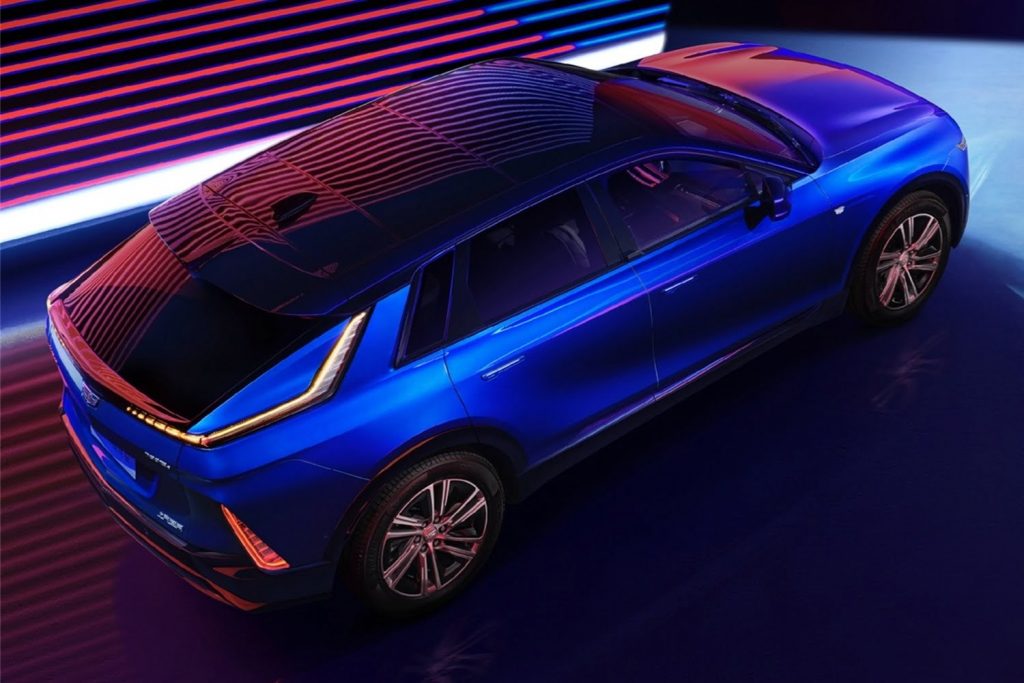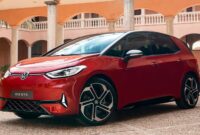The Federal EV tax credit is meant to encourage consumers to buy electric vehicles, providing a $7,500 tax break with a qualifying EV purchase or lease. The US Department of the Treasury and the IRS recently revealed new guidelines for vehicles that qualify for this tax credit, and surprisingly, the Cadillac Lyriq received an odd classification that made it ineligible.
Turns out, it’s Lyriq no classified as a utility vehicle, thereby placing it outside the parameters required for its purchaser to receive a tax credit. In contrast, the US Department of the Treasury considers Lyriq a “passenger vehicle,” meaning that its retail price must not exceed $55,000 to qualify for tax credit benefits. Currently, the Lyriq’s starting MSRP is $62,990 for the base Luxury trim.

Understandably, Cadillac’s parent company, General Motors, is not satisfied with this classification, because it could have a negative impact on sales of the luxury electric crossover.
“We are working on this matter with the Department of Finance and hope that forthcoming guidance on vehicle classification will provide the clarity consumers and dealers, as well as regulators and manufacturers, need,” a GM representative was quoted as saying. The automaker also argues that the Department of Finance should use criteria and processes similar to those of the Department of Energy for “[drive] consistency across existing federal policies and clarity for consumers.”
It’s worth noting that the Cadillac Lyriq isn’t the only electric vehicle to have gotten an odd classification. The Ford Mustang Mach-E, Ford Escape PHEV, and Lincoln Corsair are also considered passenger vehicles, not utility vehicles. The Tesla Model Y isn’t considered an SUV with a two-row, five-passenger layout, but its counterpart with a third-row, seven-passenger seating capacity. Volkswagen ID.4 is also not considered an SUV, but it acquires a classification when equipped with all-wheel drive.

For reference, here is section 523.5 of the Code of Federal Regulations relating to the federal electric vehicle tax credit:
Non-passenger car means a car that is not a passenger car or work truck and includes any vehicle described in paragraphs (a) and (b) of this section:
- (a) An automobile designed to perform at least one of the following functions:
- (1) Transportation of more than 10 people;
- (2) Provide temporary housing;
- (3) Transporting property in open berths;
- (4) Provide, as sold to the first retail purchaser, a larger volume of cargo carried than the volume of carried passengers, such as in a cargo van; if the vehicle is sold with second row seats, cargo payload volume is determined with the seats installed, regardless of whether the manufacturer has specified those seats as optional; or
- (5) Permitting the expansion of the use of cars for the purpose of transporting cargo or other non-passenger transportation purposes through:
- (i) For non-passenger cars manufactured before the 2012 model year, removal of the seat by means specified for the purpose by the car manufacturer or by simple tools, such as a screwdriver and wrench, to create a flat floor level, surface extending from the point at the very front, the seat is attached to the back of the car interior; or
- (ii) For non-passenger cars manufactured in the 2008 model year onwards, for vehicles equipped with at least 3 rows of designated seating positions as standard equipment, allow the extension of the use of the car for the purpose of the carriage of goods or other non-passenger purposes through release or storage seats that can be folded or rotated to create a flat, level cargo surface that extends from the very front point of attachment of the seat to the back of the car interior.
- (b) An automobile capable of operating off-road, as indicated by the fact that it:
- (1)
- (i) Has 4-wheel drive; or
- (ii) Rated at more than 6,000 pounds gross vehicle weight; and
- (2) Have at least four of the following characteristics which are calculated when the car is on curb weight, on a level surface, with the front wheels parallel to the car’s longitudinal centerline, and the tires are inflated to the manufacturer’s recommended pressure –
- (i) The approach angle is not less than 28 degrees.
- (ii) The breakover angle is not less than 14 degrees.
- (iii) The departure angle is not less than 20 degrees.
- (iv) Clearance distance of not less than 20 centimeters.
- (v) The clearance of the front and rear axles is not less than 18 centimeters each.
The Treasury Department defended its position, stating that its decision was based on the “pre-existing – and long standing – EPA regulatory fuel economy standards that manufacturers are so familiar with.” This standard offers clear criteria for delineating a car and an SUV.”
Want the newest Cadillac in every sense as it enters an all-electric future? Then subscribe Cadillac Society for Cadillac Lyriq news and the latest Cadillac news coverage. We also invite you to join the latest discussions on our Cadillac forums and Cadillac Lyriq forums.



